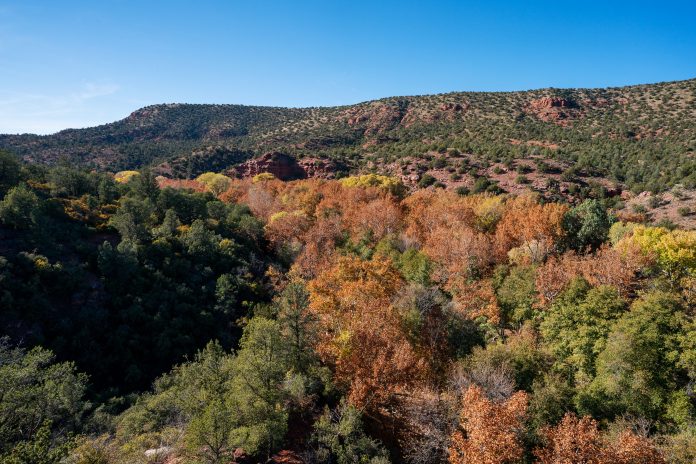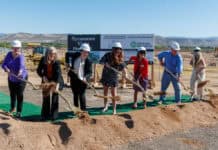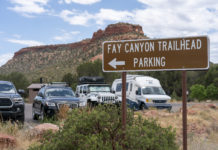
One of biggest pieces of recent legislation you might have never heard of is the Great American Outdoors Act, signed into law by President Donald Trump on Aug. 4.
The law is likely to be felt in the Verde Valley because it multiplies the cash in the Land and Water Conservation Fund, a fund that federal agencies can tap to buy parcels of private land to add to national forests, national parks and other public lands. The fund is also shared with states to improve state and city parks.
The cash in the LCWF comes from offshore oil and gas leases, paid by energy companies to the federal government. Before the Great American Outdoors Act, the amount of money in the LWCF varied year-to-year with the whims of the U.S. Congress. But the new bill guarantees the LWCF $900 million every year, roughly double recent years’ appropriations.
Jim Petterson, Southwest Director for the nonprofit Trust for Public Land, which is currently helping Coconino National Forest and the Town of Camp Verde arrange land purchases, described the new funding as “breathtaking in scope.” The increased annual funding will represent a 240% increase in LWCF funding over the next 10 years compared to the previous 10, Petterson said.
There has been a flurry of recent projects using LWCF money locally, and these could be a prelude to a boom in conservation land purchases in the coming years, according to people involved in recent LWCF projects.
“The agencies — the U.S Forest Service, National Park Service, Bureau of Land Management — they’re all now actively soliciting their units, whether that’s a park like Saguaro National Park, or whether that’s a forest like the Prescott National Forest, they’re all actively saying, ‘Look, here’s an opportunity, and let’s identify some more projects that are important for enhancing our public lands and get those submitted,’” Michael Patrick, senior project manager for the Trust for Public Land, said.
Recent Projects
■ Tobias and Flynn Oak Creek parcels, 27 acres. In process. Would add creek-side habitat to Coconino National Forest east of Airport Mesa. Also prevents Forest from having to construct a road to the parcel. Could be site of future trails.
■ Rio Verde, 84 acres purchased by Coconino National Forest in the Upper Verde River. Planned to provide additional river access point.
■ Toy Ranch, 58 acres at confluence of Verde River and Beaver Creek. Camp Verde and U.S. Forest Service plan to build a trail on property connecting city parks.
■ Camp Verde Sports Complex, $2.5 million. Camp Verde is awaiting final approval of a big matching grant from the state side of Land & Water Conservation Fund to develop its Sports Complex.
Steve Ayers, economic development director for the town of Camp Verde, said he believes the increased conservation funds will be a boon for the Verde Valley.
“I think this funding source is a significant game changer, especially from a small town’s perspective,” Ayers said. “This will bring in several million dollars primarily to help fund some large regional projects out there that I don’t think would otherwise be built if not for this lone funding source.”
Patrick said that the Trust for Public Land, with its mission of “protecting land for people,” looks for parcels of land that are both ecologically important — like a spring or river — but also have the potential to give access to users of public lands.
Patrick and Ayers both cited Camp Verde’s 58-acre Toy Ranch purchase — at the confluence of Beaver Creek and the Verde River — as a model LWCF project.
Not only will the purchase protect river habitat, but “It was also the one piece of private land in a pathway that we identified that would be able to connect the sports park with the next upstream park from there …. We’re working with Coconino National Forest now to create a trail so you’ll be able to walk from the sports park up to Rezzonico Park,” Ayers said.
Even with a significantly larger fund, there are still barriers to purchasing environmentally important parcels of land. Local national forests have to compete for LWCF funds with the rest of the country through an application process, and agencies can’t pay more than fair market value for land. The government has “pretty strict polices on how the appraisals are done,” Patrick said.
“It’s surprising how many of these projects are successful in spite of that,” he said. “A lot of people have had the land for a long time. Maybe they’re second or third generation owners, and they want to honor their stewardship of it. But obviously every seller is different.”
Patrick said that more conservation projects are coming, but “it takes a while to put these projects together and then submit them to Washington and get the funding. So maybe it’s a year or two before a big change.”
The Great American Outdoors Act was endorsed by major environmental groups like The Sierra Club, but some environmentalists have qualms about tying conservation to fossil fuel production.
Joe Trudeau, a Prescott-based conservation advocate for the Center for Biological Diversity, noted that the federal drilling leases will harm the environments the revenue is protecting.
“The Great American Outdoors Act will have very real benefits for the Verde Valley and Central Arizona, but its reliance on fossil fuel revenues puts us in a real ‘one step forward, two steps back’ predicament,” Trudeau said. “We must not forget that the source of these funds is oil and gas drilling, so any progress in land protection comes at a cost to our climate.”
For Petterson, the permanency of the LWCF projects makes the law a win for conservation.
“Our reliance on fossil fuels is changing and changing rapidly, but the things that we are able to do with these resources today will be there tomorrow, even at a time when we’re no longer powering our economy with fossil fuels,” he said.





















